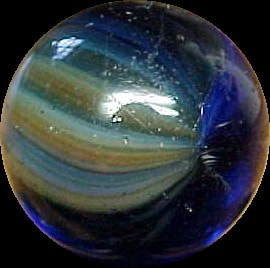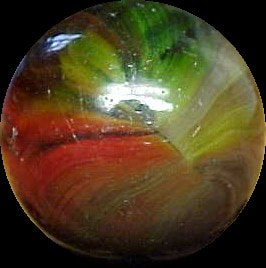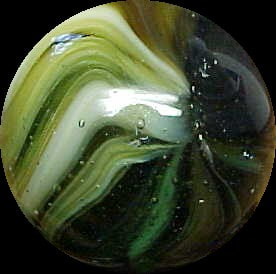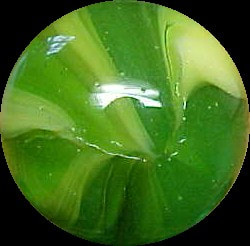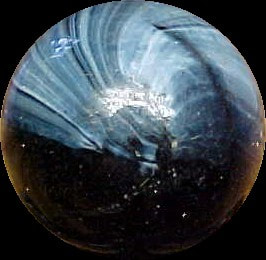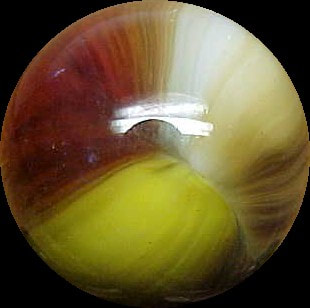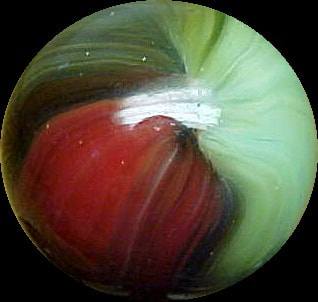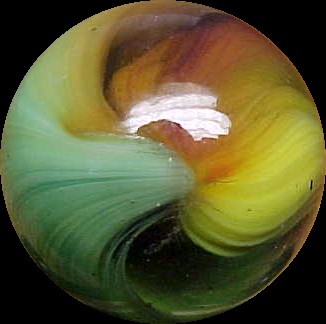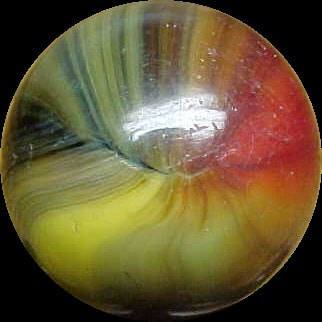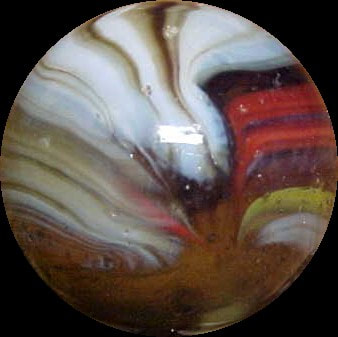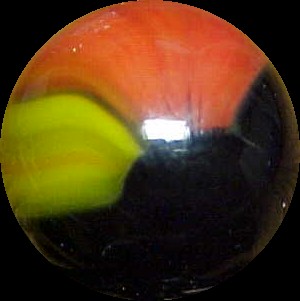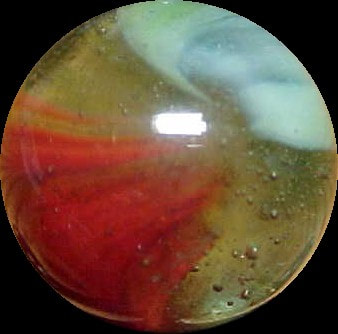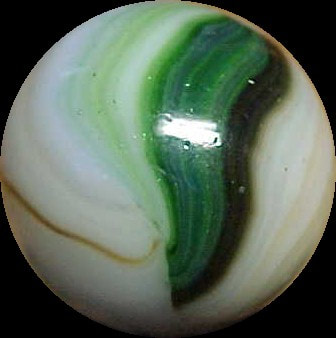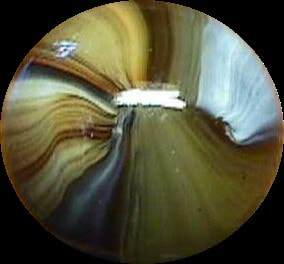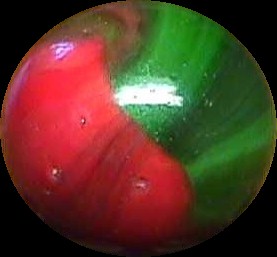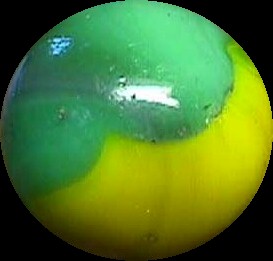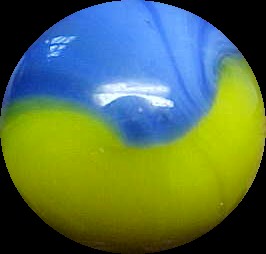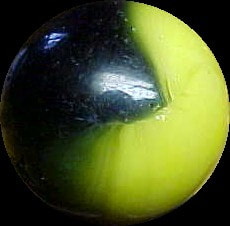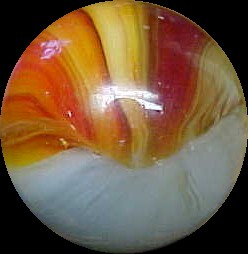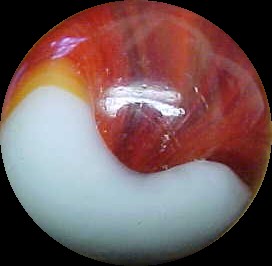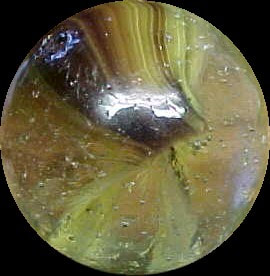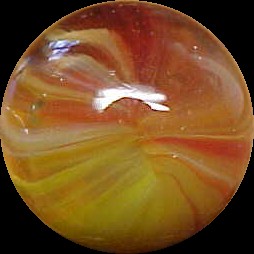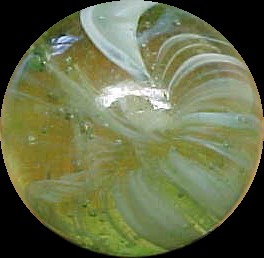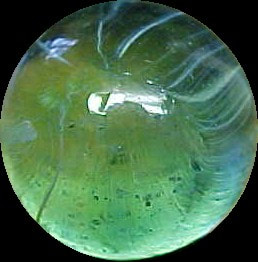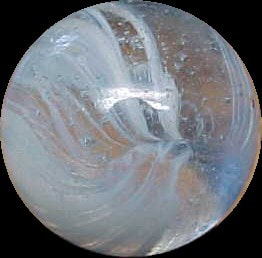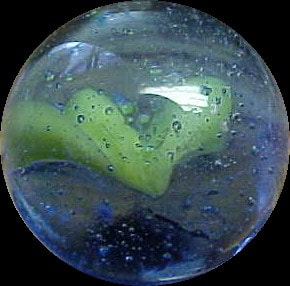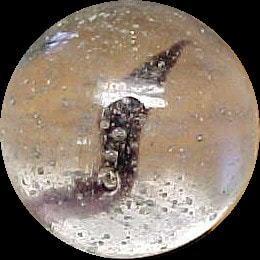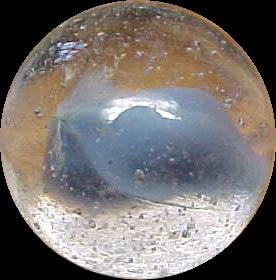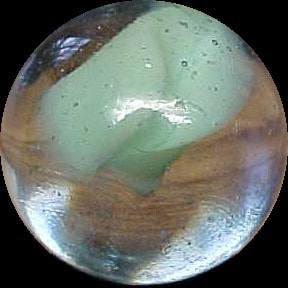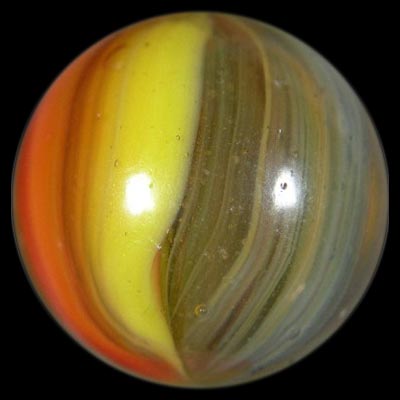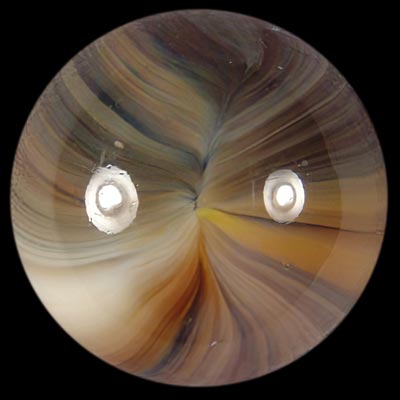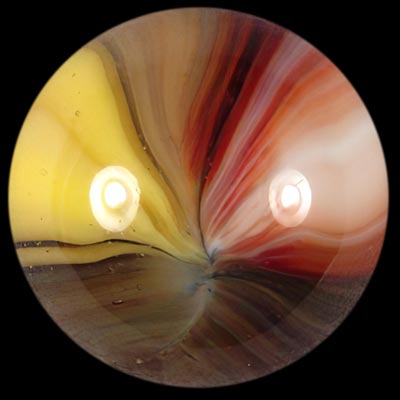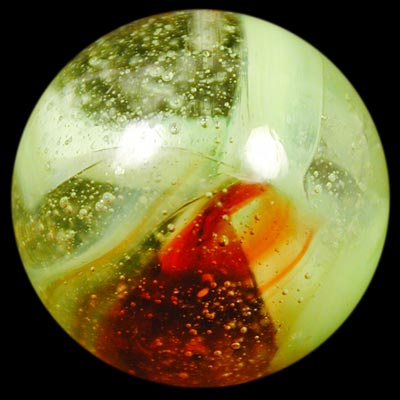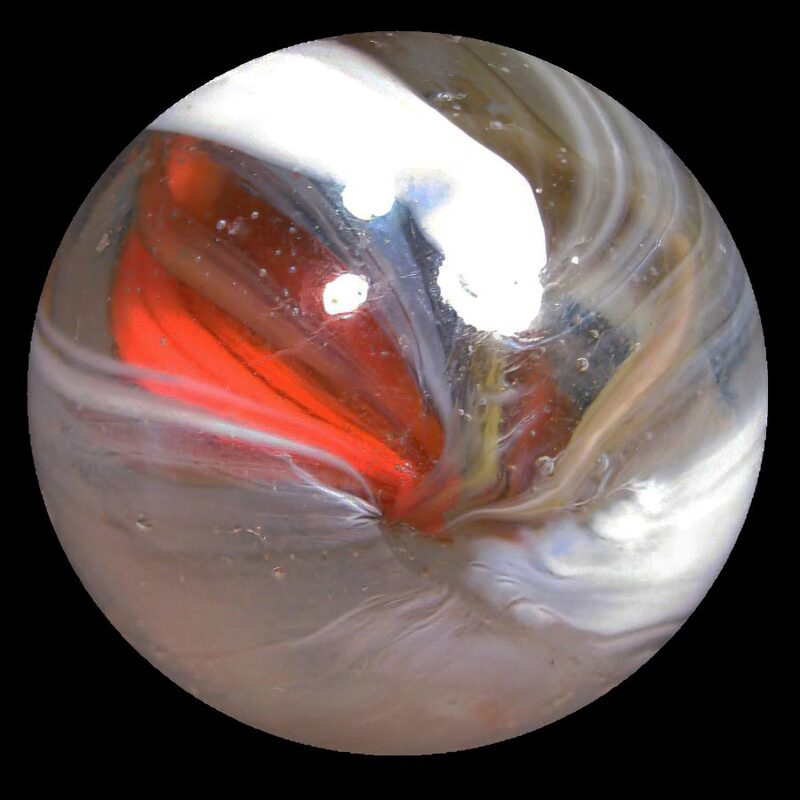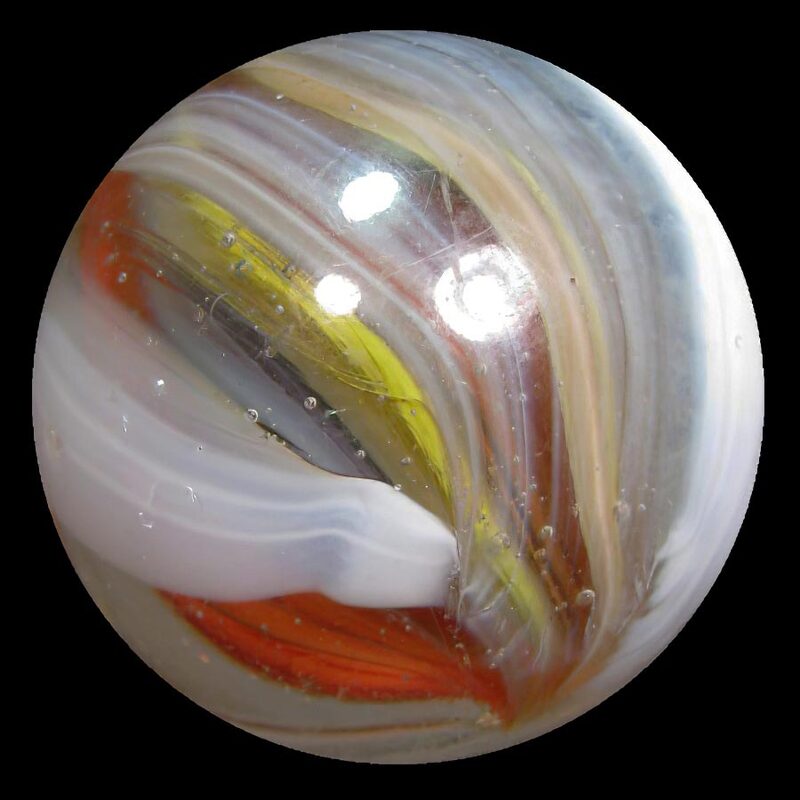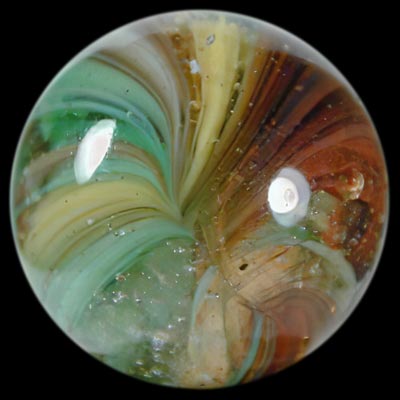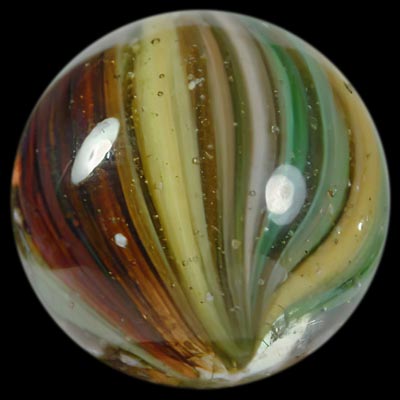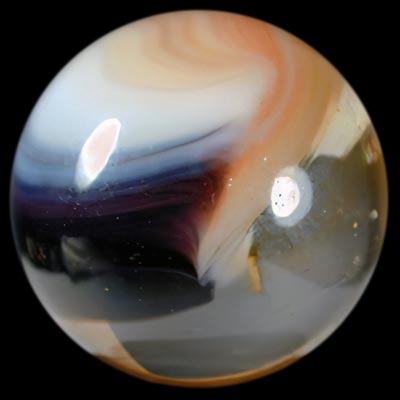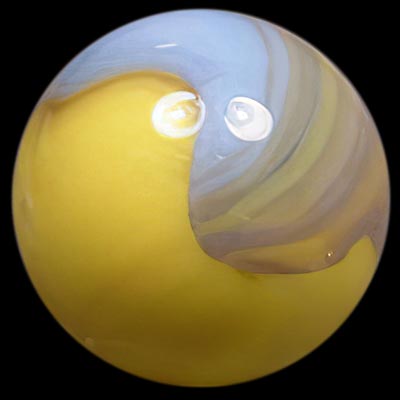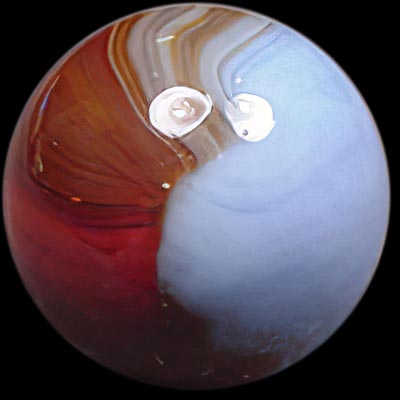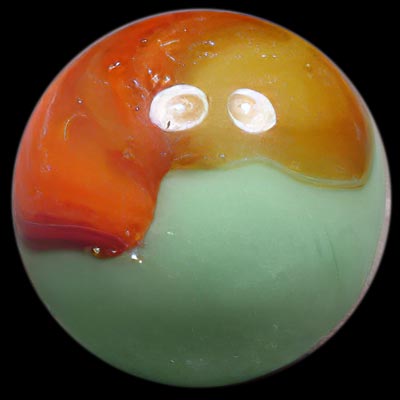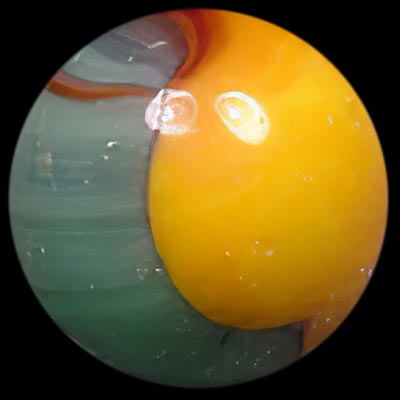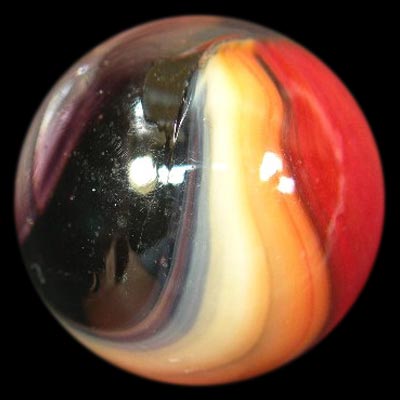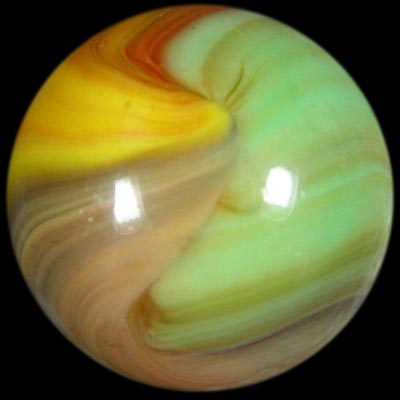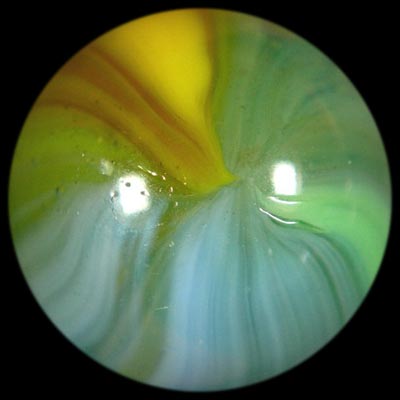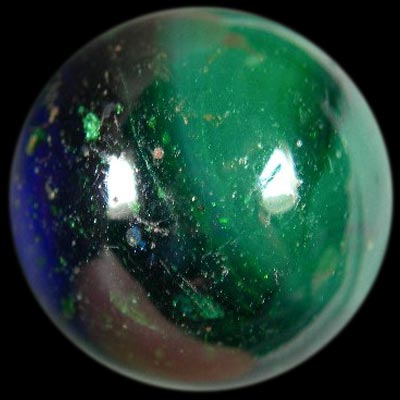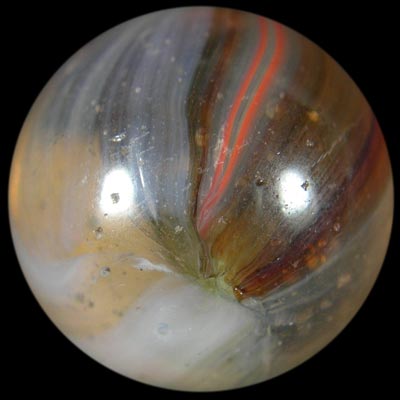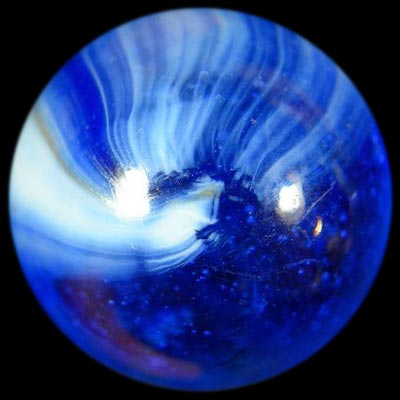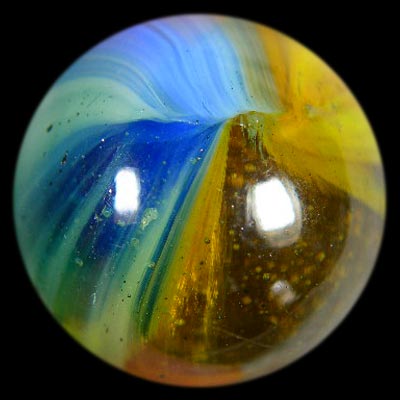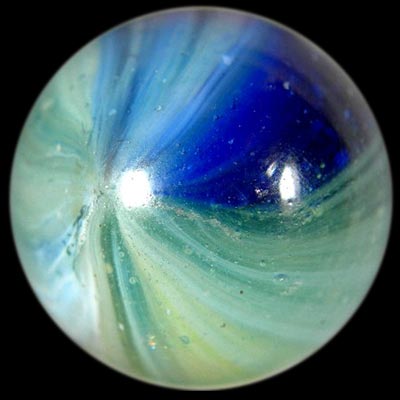MASTER MARBLE CO. / MASTER GLASS CO. (1930-1973)
COMPANY HISTORY
The Master Marble Company formed in 1930 following the departure of several key employees from Akro Agate. These former employees, John F. Early, Claude C. Grimmett, John E. Moulton, and (later) Clinton F. Israel, set up their fledgling company in Anmoore, West Virginia, and began producing marbles almost immediately, perhaps first from an Akro Agate machine modified by Early and then from one designed by Early.
In their first year of business, Master Marble received an offer by Akro Agate to buy them out. However, they refused, setting off a price war initiated by the latter company. Akro even went so far as to send an employee onto the company grounds to spy; this person was caught and eventually jailed. Frustrated, Akro Agate tried the legal route to destroy Master Marble through litigation, as they believed their competitor's owners (former Akro employees) had infringed on Akro's patents. This law suit endured from 1933-1937, terminating in Master's favor.
Master Marble Company gained prominence when, in 1933, they exhibited millions of marbles at the Chicago World's Fair. A collector's "College Edition" box was produced for the event. These boxes, which were available in several sizes, are now exceedingly rare and valuable.
By 1936 both Grimmett and Moulton left the company, followed soon by Early. This perhaps precipitated the closing of the company in 1941. The equipment and supplies were purchased by the sole remaining founder, Clinton Israel, who re-established a marble company in Bridgeport, West Virginia, as Master Glass. The Master Glass Company produced marbles that were similar to Master Marble Company marbles, as the same machines were used, and also sold Akro Agate marbles and jobbered its own marbles in Akro boxes following the closing of that company in 1951. Production continued until 1973, when the company closed its doors for good. Israel died two years later.
The Master Marble Company formed in 1930 following the departure of several key employees from Akro Agate. These former employees, John F. Early, Claude C. Grimmett, John E. Moulton, and (later) Clinton F. Israel, set up their fledgling company in Anmoore, West Virginia, and began producing marbles almost immediately, perhaps first from an Akro Agate machine modified by Early and then from one designed by Early.
In their first year of business, Master Marble received an offer by Akro Agate to buy them out. However, they refused, setting off a price war initiated by the latter company. Akro even went so far as to send an employee onto the company grounds to spy; this person was caught and eventually jailed. Frustrated, Akro Agate tried the legal route to destroy Master Marble through litigation, as they believed their competitor's owners (former Akro employees) had infringed on Akro's patents. This law suit endured from 1933-1937, terminating in Master's favor.
Master Marble Company gained prominence when, in 1933, they exhibited millions of marbles at the Chicago World's Fair. A collector's "College Edition" box was produced for the event. These boxes, which were available in several sizes, are now exceedingly rare and valuable.
By 1936 both Grimmett and Moulton left the company, followed soon by Early. This perhaps precipitated the closing of the company in 1941. The equipment and supplies were purchased by the sole remaining founder, Clinton Israel, who re-established a marble company in Bridgeport, West Virginia, as Master Glass. The Master Glass Company produced marbles that were similar to Master Marble Company marbles, as the same machines were used, and also sold Akro Agate marbles and jobbered its own marbles in Akro boxes following the closing of that company in 1951. Production continued until 1973, when the company closed its doors for good. Israel died two years later.
IDENTIFICATION TIPS
All marbles produced by Master Marble and Master Glass utilized the same type of machinery which was similar to that used by Akro Agate but which never involved the "Freese improvement" that eliminated the cutoff marks at the poles by offsetting the rollers. Therefore, all Master marbles, even the clearies and opaques, possess tiny crimp marks and feathering at either pole. These crimps will occur in conjunction with the seams, which usually form a "V" or "U" shape. Generally, the "U"-shaped seams apparently occur on older examples (Master Marble) while the "V"-shaped seams are associated more with later ones (Master Glass).
An additional method, and perhaps a more reliable one, to differentiate between Master Marble and Master Glass marbles is that generally brighter colors were employed on the former, while duller colors were used on the latter. This trait is seem on most American machine made marbles, which switched to cheaper, and therefore less vibrant, glass during the 1930s.
In terms of size, Master Marbles were almost exclusively limited to the 9/16"-25/32" range. While some smaller specimens have been reported, very few larger ones exist.
ORIGINAL PACKAGING
Master Marble box sets began to appear in many different varieties in 1933. This includes a set of boxes exclusively for the 1933 Chicago World's Fair, at which the company had an exhibit. These boxes were made in three different sizes, each featuring a panoramic aerial view of the fair on the inside cover and a simpler picture of the fair in red print, along with the company name and "Century of Progress Chicago 1933" on an outside slip cover. A special 'College Edition' was also made with a red felt top and the image of the fair inside the cover. Other quite rare boxes made for the World's Fair, contained a single hand ground agate and one that contained two hand ground agates. The single box comes in two styles, one for 1933 and one for 1934. The dates are printed on the covers. A red mesh bag with a large paper header with the picture of the 1933 Worlds fair and labeled Century of Progress was also sold. Inside the bag of marbles was Master Marble House postcard.
Other early boxes by Master Marble include retailer stock and display boxes containing 100 specimens of a single type of marble, colorful gift set boxes (often with "Sunbeams," rainbow-colored rays radiating from the circular company logo), stenciled game marble boxes, and game marble boxes containing smaller cellophane-covered boxes (three or five) with single colored opaque marbles.
Another type of "Sunbeam" box was the No. 13 box containing thirteen marbles. These oblong boxes were made by both Master Marble and later by Master Glass, though the former are more rare. They contained oval cut-outs to allow the marbles inside to be viewed, and the backsides of the boxes often contain advertising for such companies as "Popsicle" or for people running for local and political offices.
Master Glass also commonly distributed its marbles in the No. 5 box, which was blue and red with ten oval cutouts on the front, along with the company logo. These are reported to have been recently reproduced, though the originals are fairly common and therefore inexpensive. The No. 10 box is much more scarce and is essentially the same as the No. 5 box, but twice the size and with 20 oval cutouts. The No. 10 boxes usually have the rules for the game of "Ringer" printed on the rear.
The final type of original packaging is the polyvinyl bag, which was made by Master Glass but not by its predecessor. These bags differ from those of other companies in that they do not possess the rear vertical seam but rather were heat sealed along the top. The headers consist of thin peach-colored paper situated inside the package, not outside, and the heat-seal lies approximately through the center of the header. The marbles in these packages are typically Catseyes and Clearies.
All marbles produced by Master Marble and Master Glass utilized the same type of machinery which was similar to that used by Akro Agate but which never involved the "Freese improvement" that eliminated the cutoff marks at the poles by offsetting the rollers. Therefore, all Master marbles, even the clearies and opaques, possess tiny crimp marks and feathering at either pole. These crimps will occur in conjunction with the seams, which usually form a "V" or "U" shape. Generally, the "U"-shaped seams apparently occur on older examples (Master Marble) while the "V"-shaped seams are associated more with later ones (Master Glass).
An additional method, and perhaps a more reliable one, to differentiate between Master Marble and Master Glass marbles is that generally brighter colors were employed on the former, while duller colors were used on the latter. This trait is seem on most American machine made marbles, which switched to cheaper, and therefore less vibrant, glass during the 1930s.
In terms of size, Master Marbles were almost exclusively limited to the 9/16"-25/32" range. While some smaller specimens have been reported, very few larger ones exist.
ORIGINAL PACKAGING
Master Marble box sets began to appear in many different varieties in 1933. This includes a set of boxes exclusively for the 1933 Chicago World's Fair, at which the company had an exhibit. These boxes were made in three different sizes, each featuring a panoramic aerial view of the fair on the inside cover and a simpler picture of the fair in red print, along with the company name and "Century of Progress Chicago 1933" on an outside slip cover. A special 'College Edition' was also made with a red felt top and the image of the fair inside the cover. Other quite rare boxes made for the World's Fair, contained a single hand ground agate and one that contained two hand ground agates. The single box comes in two styles, one for 1933 and one for 1934. The dates are printed on the covers. A red mesh bag with a large paper header with the picture of the 1933 Worlds fair and labeled Century of Progress was also sold. Inside the bag of marbles was Master Marble House postcard.
Other early boxes by Master Marble include retailer stock and display boxes containing 100 specimens of a single type of marble, colorful gift set boxes (often with "Sunbeams," rainbow-colored rays radiating from the circular company logo), stenciled game marble boxes, and game marble boxes containing smaller cellophane-covered boxes (three or five) with single colored opaque marbles.
Another type of "Sunbeam" box was the No. 13 box containing thirteen marbles. These oblong boxes were made by both Master Marble and later by Master Glass, though the former are more rare. They contained oval cut-outs to allow the marbles inside to be viewed, and the backsides of the boxes often contain advertising for such companies as "Popsicle" or for people running for local and political offices.
Master Glass also commonly distributed its marbles in the No. 5 box, which was blue and red with ten oval cutouts on the front, along with the company logo. These are reported to have been recently reproduced, though the originals are fairly common and therefore inexpensive. The No. 10 box is much more scarce and is essentially the same as the No. 5 box, but twice the size and with 20 oval cutouts. The No. 10 boxes usually have the rules for the game of "Ringer" printed on the rear.
The final type of original packaging is the polyvinyl bag, which was made by Master Glass but not by its predecessor. These bags differ from those of other companies in that they do not possess the rear vertical seam but rather were heat sealed along the top. The headers consist of thin peach-colored paper situated inside the package, not outside, and the heat-seal lies approximately through the center of the header. The marbles in these packages are typically Catseyes and Clearies.
MASTER GALLERY
(Hover your mouse or lightly touch the image to see the type of marble. Click to view the full size image)
(Hover your mouse or lightly touch the image to see the type of marble. Click to view the full size image)

